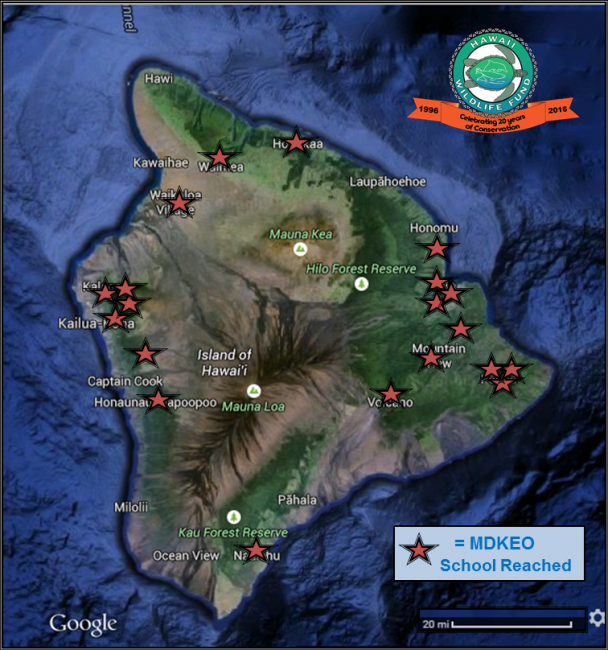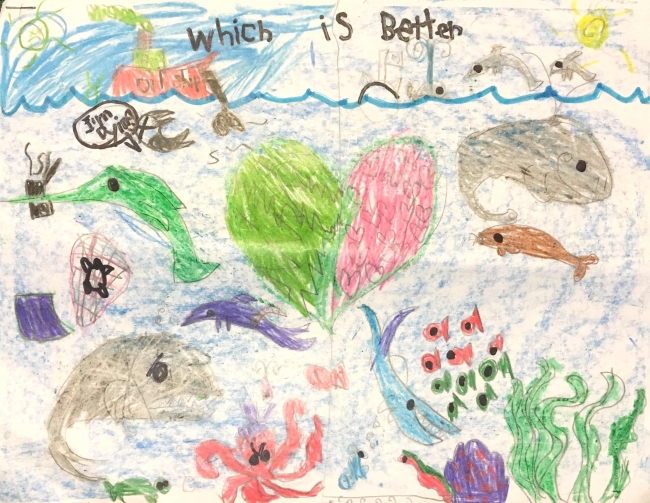By: Megan Lamson, Guest Blogger and Vice President for the Hawai‘i Wildlife Fund
Hawaiʻi Wildlife Fund (HWF) is excited about the release of the new marine debris prevention curriculum designed for elementary school students around Hawaiʻi, created through a project funded by a NOAA Marine Debris Program Prevention through Education and Outreach grant.
Over the past two school years, HWF mentors piloted this curriculum in 20 public schools, working with over 52 teachers and 1,140 students (grades K-5) in schools around Hawaiʻi Island (including schools located in Kona, Kohala, Kaʻū, Hāmākua, Hilo, and Puna). “It was a great pleasure guest teaching in the many different classrooms around the island. We look forward to deepening our relationships with Hawaiʻi Island students and teachers in the coming years” said HWF mentor and Education Coordinator, Stacey Breining.
The “Marine Debris Keiki Education and Outreach” curriculum teaches children about aquatic life and ecosystems (basic marine biology concepts), marine debris and how land-based litter finds its way into the sea, what a “discard” is and how our daily choices affect the amount of trash we produce, and the vulnerability of island ecosystems and communities and the responsibility (kuleana) that we each have to protect them.
The curriculum was designed as a 3-tiered program that challenges students to put forward innovative solutions to the global marine debris problem. The lessons are aligned with Hawaiʻi’s Common Core and Next Generation Science standards and other benchmarks relevant to the elementary school level. All of the lessons and activities are available for free download from the HWF website and can also be found on the NOAA Marine Debris Program website.
As an optional follow-up component of this program, nine cleanup events were conducted, during which 286 students participated in removing over 1,500 pounds of marine- and land-based debris items from the local coastline, stream banks, or their campus!
Check out this awesome new curriculum free of charge on the Hawaiʻi Wildlife Fund website or on the NOAA Marine Debris Program website.




